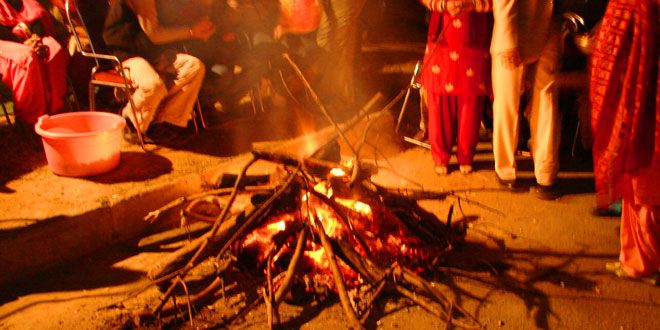Harvest festival of Lohri is being celebrated with traditional fervor and enthusiasm in most parts of North India today.
Lohri is a popular festival celebrated by the people of Punjab, particularly of the Sikh and Hindu faiths.
The origins of Lohri are many and it is primarily linked to the Punjab region of the Indian subcontinent.
Many people believe the festival was originally celebrated on the day of the Winter Solstice, being the shortest day and the longest night of the year.
North India to celebrate Harvest Festival of Lohri
Historically, there are many origins of Lohri: all forming part of folklore. However, the main theme of Lohri is the belief that Lohri is the cultural celebration of the Winter Solstice.
A key feature of Lohri is the bonfire. Lighting of the fire has been common in Winter Solstice festivals throughout time and the world. It signifies the return of longer days. For some the bonfire has a religious meaning, a remnant of ancient origins, perhaps? For others, the bonfire is no more than a tradition.
Going forward, instead of celebrating Lohri on the day of the Winter Solstice, Punjabis celebrate it on the last day of the month during which the Winter Solstice takes place. This is due to the linking of Lohri to the Bikrami calendar and the twinning of the festival with Makar Sankranti.
According to folk lore, in ancient times Lohri was celebrated on winter solstice day. It is for this reason that people believe the Lohri night is meant to be the longest night of the year and on the day after Lohri, day light is meant to increase. The day after Lohri is celebrated as Makar Sankranti when the days are meant to start getting longer.
However, scientifically, the shortest day of the year is around December 21 – 22 after which the days begin to get longer.
Accordingly, the Winter Solstice begins on December 21 or December 22 and Lohri ought to be celebrated on the day of the Winter Solstice.
Punjabis, irrespective of their religion, continue to practice their folk religion. Respect to the seasons and the natural elements of fire, wind, water and the earth is very important. Lohri is a festival dedicated to the end of the Winter season whereas Teej (known as Teeyan in Punjabi) is dedicated to the rain / Monsoon season and Basant is dedicated to the Spring season.
Lohri is traditionally associated with the harvest of Rabi crops. People take peanuts, rewri, flour, butter and various food items to places of religious worship to thank God for a good harvest.
Farmers in Punjab see the day after Lohri as the financial new year. It is a very important day.
 Kids Portal For Parents India Kids Network
Kids Portal For Parents India Kids Network







